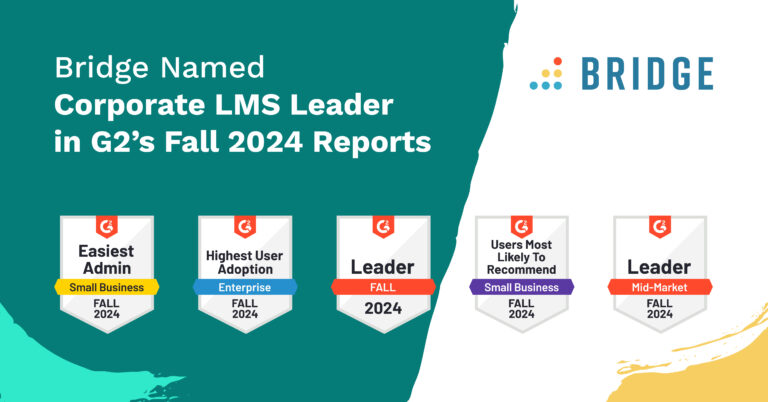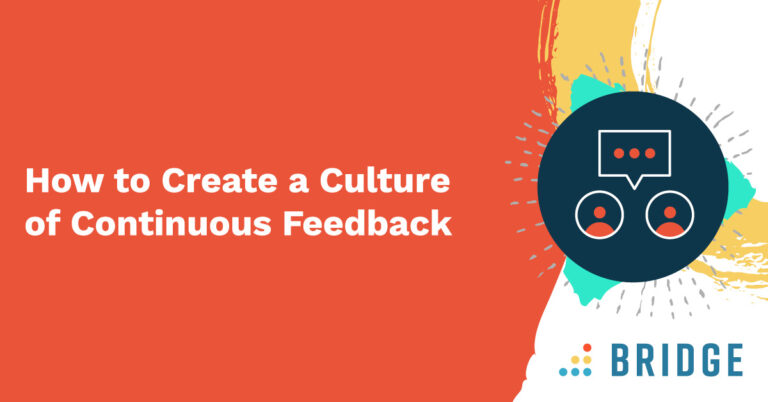Investing in an AI-assisted learning platform has the potential to increase your team’s efficiency and productivity, enhance the learner experience, and improve organizational performance outcomes.
If your team is looking for ways to incorporate AI into your workflow, your executives are likely to be considering it, too. That’s because results from the 2024 Work Trend Index, compiled by Microsoft and LinkedIn, indicate that 79% of business leaders see adopting AI as essential for their organization to remain competitive.
Find out how the right corporate LMS can help your organization stay ahead for the future and what learning, upskilling, and employee development features to look for.
Why Use an AI-Powered LMS?
According to LinkedIn's Workplace Learning Report, 90% of business leaders globally plan to either increase or keep investments in L&D steady in 2024.
Executives see upskilling and reskilling as a top priority, and L&D professionals cite aligning learning with business goals as a top area of focus for 2024. However, they also understand effective L&D programs empower growth by connecting individual aspirations with organizational business priorities. As a result, helping employees develop in their careers was the fourth most common priority, up five places from 2023.
Access to a comprehensive, easy-to-use learning platform is key for planning, implementing, and adapting your L&D initiatives. And by leveraging AI-driven algorithms, data analytics, and automation, you can eliminate manual, time-consuming tasks such as searching databases and surfacing data-driven insights. Instead, you can focus on the high-value strategic tasks.
Tapping into these agile features will benefit your learners, admins, as well as your organization. By quickly and easily drawing on learning and skills insights and connecting data, you empower professional growth, help employees define their own career journeys, and proactively fill skills gaps.
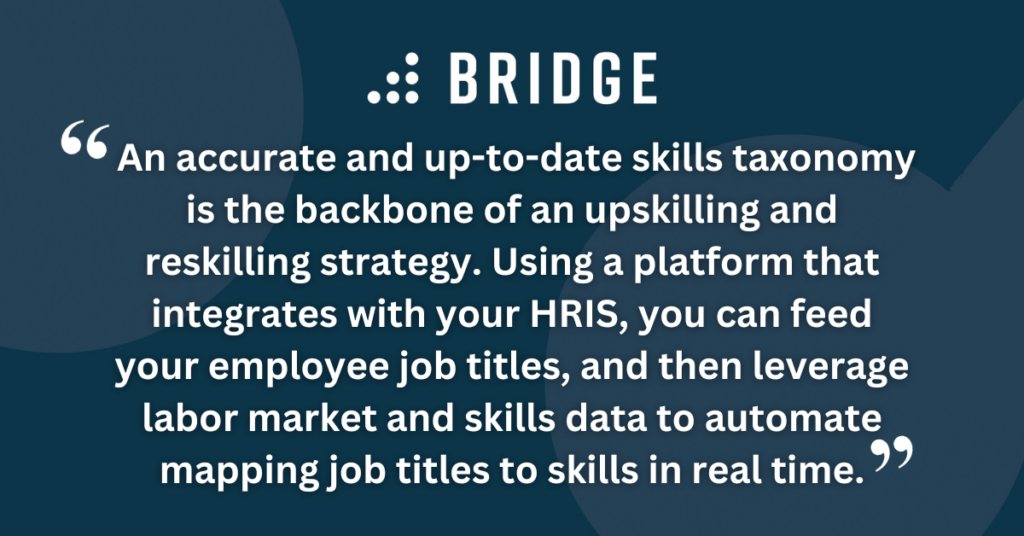
5 Ways That Bridge LMS Uses AI
Including AI tools in your HR tech stack brings transformative potential for learning and development. Here are some of the features you can expect to find when you select a learning platform with AI and automation capabilities.
1) Identifying and Organizing Skills
An accurate and up-to-date skills taxonomy is the backbone of an upskilling and reskilling strategy. However, building a skills framework from the ground up is time intensive and requires identifying existing job roles and mapping them to the essential skills needed for business success.
An LMS with AI capabilities like Bridge does the heavy lifting for you. Using a platform that integrates with your HRIS, you can feed your employee job titles and then leverage labor market and skills data to automate mapping job titles to skills in real time.
You can use this information to build and maintain a customizable skills taxonomy of the most common skills for each job title based on your industry and the current job market.
EXPLORE MORE WAYS TO USE AI | ‘How to Create an Effective Skills Matrix With the Help of AI-Based Skills Suggestions’
2) Creating and Managing Content
To maximize learner engagement and knowledge acquisition, you need to know that your learners are seeing the right content. However, with so much existing material, it can take time to determine which courses relate to which skills.
You can use AI to scan your course library, review content titles and descriptions, and automatically generate a list of associated skills. This means your people will get a curated experience and receive content recommendations from your library based on their interests, goals, and roles.
Leveraging the power of AI can also assist you with course authoring, such as asset generation, language translation, and course summarization. These features give you an efficient system for creating and reviewing courses and ensuring the right audiences see them.
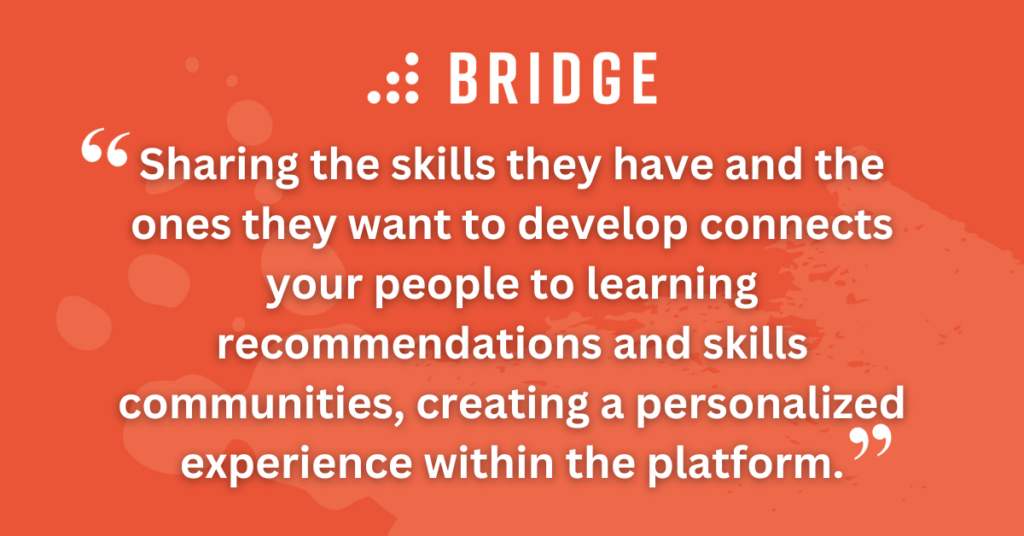
3) Personalizing Employee Development
Even when your content is tagged and organized correctly, your people might not always know what skills they're looking for or what's most useful for their growth and career development. Your learning platform can help your people define these skills and take ownership of their employee development.
Incorporating industry-specific skills data and algorithmic intervention into an LMS supplies your learners with job-specific recommendations based on their current roles and career goals. Within Bridge's platform, your people are assisted in completing their profiles with a list of skills related to their current roles and career aspirations.
These skills suggestions give employees a starting point, helping them define their growth and then connecting goals, tasks, and training to make it measurable. Sharing the skills they have and those they want to develop connects your people to learning recommendations and skills communities, creating a personalized experience within the platform.
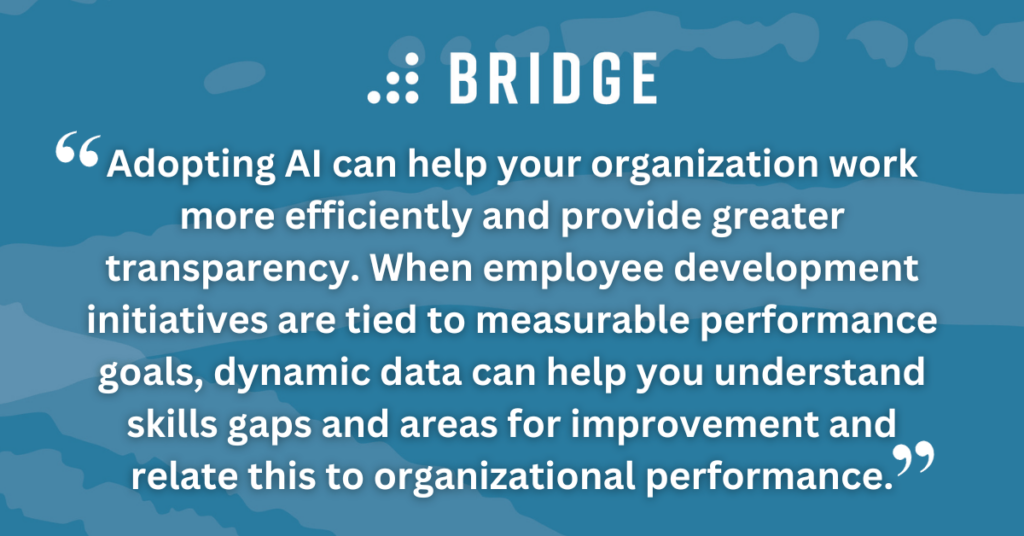
4) Facilitating Continuous Performance Conversations and Feedback
According to Asana, 60% of executives believe AI will help their organization set and achieve goals. Similarly, 32% of employees are open to using AI to assess their performance.
Adopting AI can help your organization work more efficiently and provide greater transparency. When employee development initiatives are tied to measurable performance goals, dynamic data can help you understand skills gaps and areas for improvement, and relate this to organizational performance.
At an individual level, employees can build actionable development plans based on the skills they need to perform their roles and achieve their career goals. By assigning development programs and automating key actions such as checkpoints and tasks, knowledge checks, and skills feedback requests tied to these goals, you'll get data to identify talent gaps and make growth measurable.
Access to real-time skills insights is valuable for your people managers to facilitate development conversations. Managers can then aggregate skills and performance dashboards to better understand skills coverage and goal alignment within their teams, after which they can effectively plan and steer conversations.
5) Making Strategic Skills Decisions
With AI assistance, you can map job titles to skills in real time, allowing you to track industry shifts and trends, and make strategic talent and development decisions. Beyond the benefits of reducing manual work, this helps you understand what skills are required from these roles today and plan for the future.
The skills data you collect within your LMS, such as tagging your content, employee profiles, and employee skills feedback, is a powerful strategic tool. Automating and collecting in-depth skills reports via analytics dashboards allows you to track and measure skills at individual, team, and organizational levels.
What's more, this information assists in showing you where talent gaps exist, revealing your strongest performers, and predicting future talent requirements and skills gaps. You can also use these insights to refine your L&D offering, checking that content aligns with people's goals and interests and filling any gaps in your learning library.
DISCOVER WHAT ELSE YOU CAN DO USING BRIDGE | ‘How Bridge Brings Learning, Development, and Upskilling Together’
See What an AI-Powered L&D Solution Can Do for You
Bridge offers AI-driven skills management, career development plans, peer recognition, and feedback tools. To see Bridge's learning, development, and upskilling capabilities for yourself, check out our self-guided walkthrough or request a demo.


